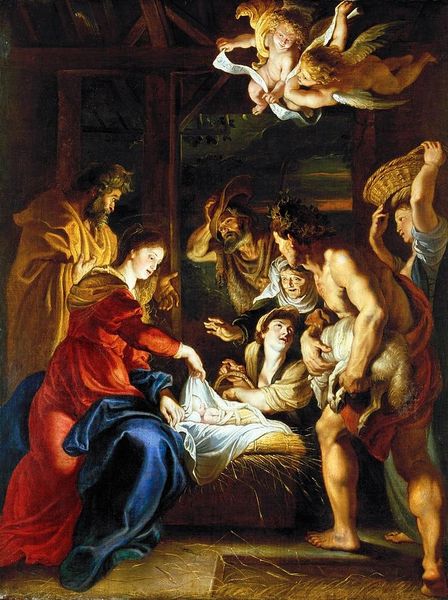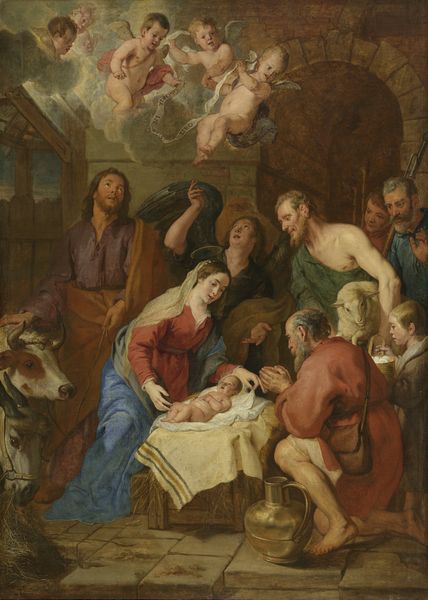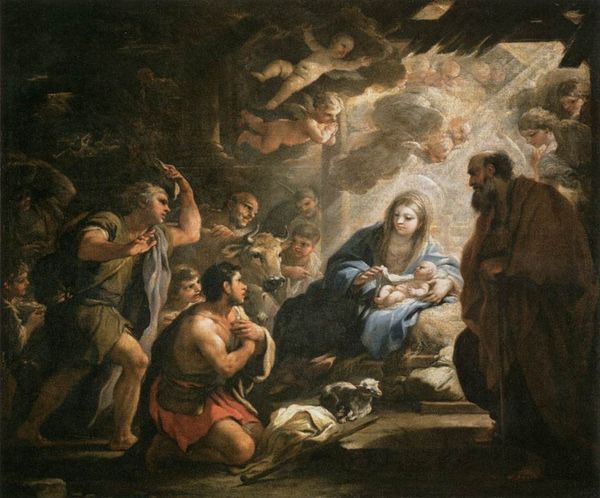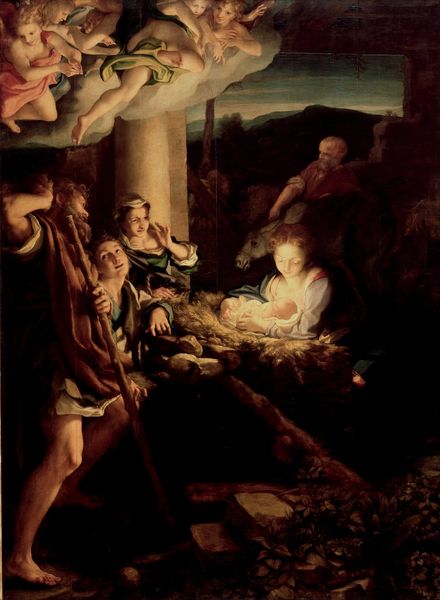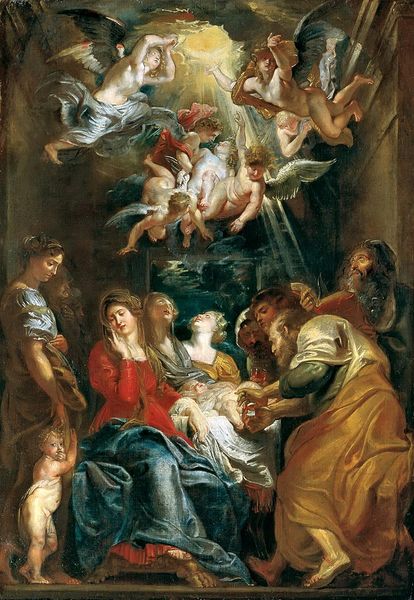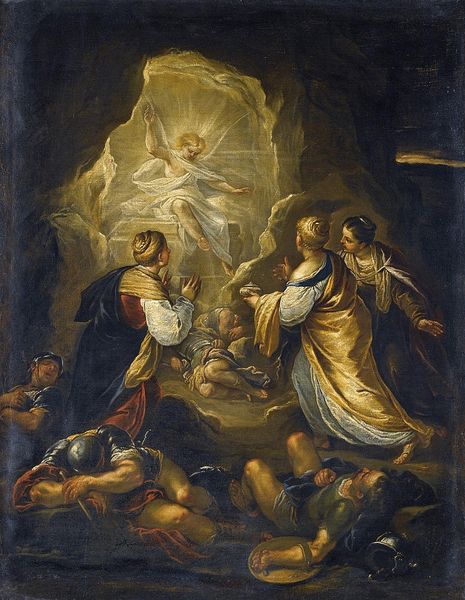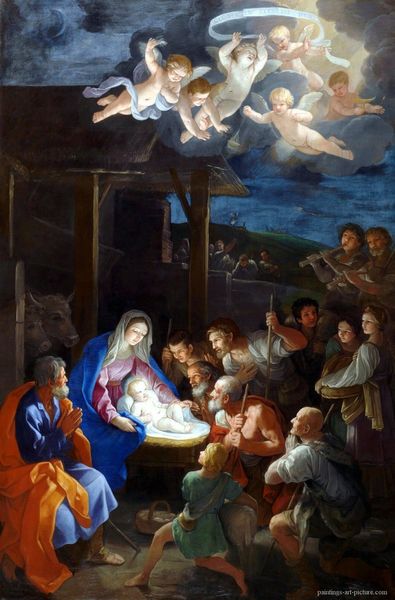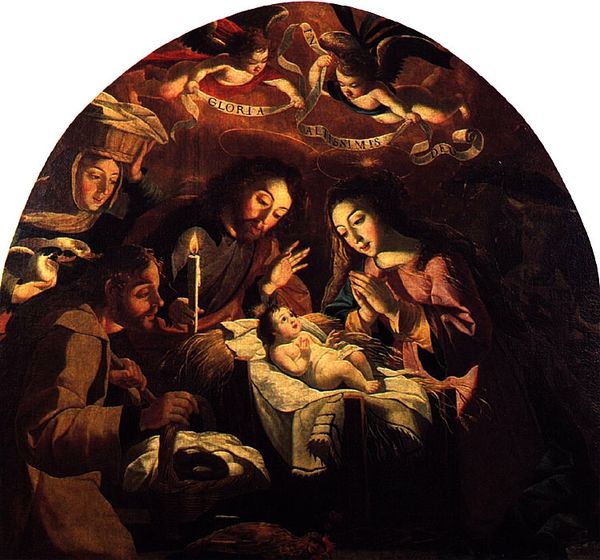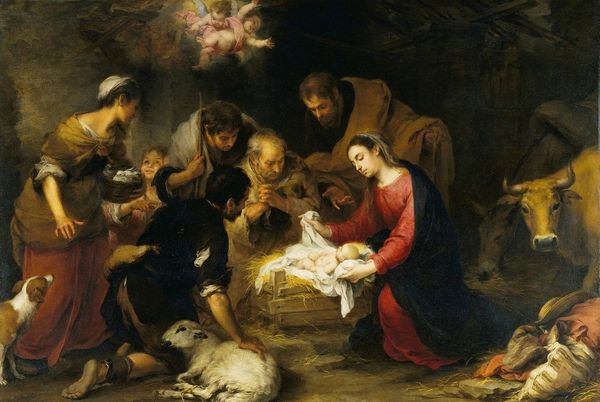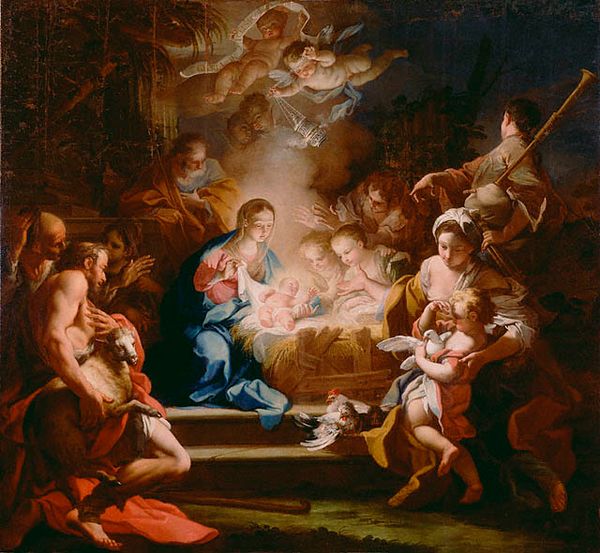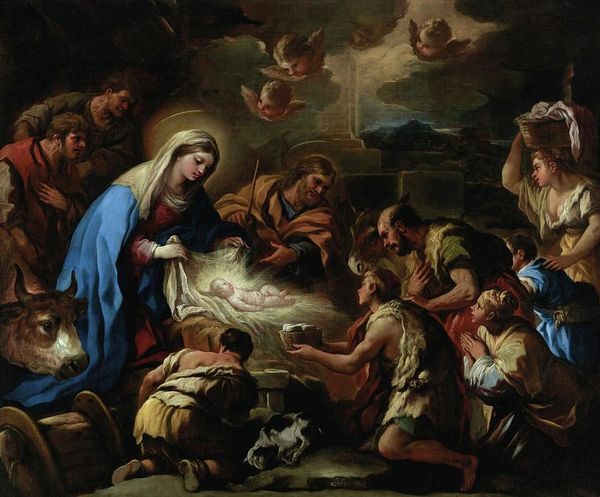
oil-paint
#
portrait
#
narrative-art
#
baroque
#
oil-paint
#
figuration
#
oil painting
#
history-painting
Dimensions: 46 x 34 cm
Copyright: Public domain
Editor: Take a look at this, everyone: "Adoration of the Shepherds" by Peter Paul Rubens, painted in 1616. The oil on canvas seems to radiate warmth and light from the center. What stands out to you when you view this piece? Curator: The painting reflects the broader religious and social currents of the time. Rubens painted this during the Counter-Reformation, a period when the Catholic Church sought to revitalize religious sentiment. Consider how Rubens uses dramatic lighting and expressive figures. Notice how this enhances the emotional impact of the scene. Where do you think Rubens was trying to position the viewer, socially and emotionally? Editor: That's interesting. It feels almost voyeuristic. Like we are commoners pushing our way in to catch a peek. So you're suggesting that its public role would be to inspire piety and devotion in, well, people like us? Curator: Exactly! And think about where this would have originally been displayed—likely in a church or other public space. The politics of imagery are fascinating, aren't they? Rubens uses the spectacle of the Baroque style to impress and move the viewer, reinforcing the importance of the church's message and it's influence on its people. It's visual propaganda of the most divine kind. Editor: So it’s less about pure artistic expression and more about serving the institutional needs of the Church? Curator: It’s a dance between the two. Artists often navigated the needs of their patrons while also trying to leave their mark. Understanding those forces helps us truly appreciate these works, even centuries later. Editor: I see the intention behind such imposing imagery so much more clearly now! Curator: And I can appreciate anew the sheer artistic talent required to serve these powerful interests so brilliantly!
Comments
No comments
Be the first to comment and join the conversation on the ultimate creative platform.
